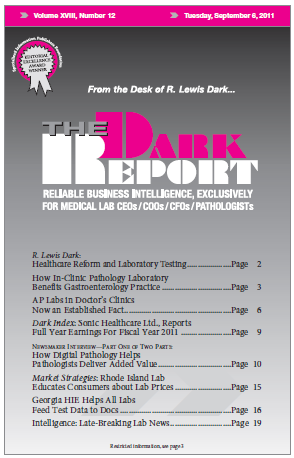ON AUGUST 23, Sonic Healthcare Ltd., of Sydney, Australia, released its financial results for its fiscal year ending June 30, 2011. This provided an opportunity to assess Sonic’s impact in the United States, where it has regularly expanded its testing activities. Sonic reported statutory revenue in FY 2011 of A$3.1 billion, compared to A$3.0 billion …
Sonic Healthcare Ltd., Reports Full Year Earnings for FY 2011 Read More »
To access this post, you must purchase The Dark Report.


